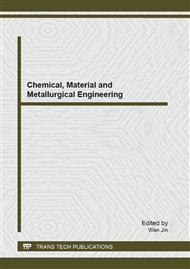p.161
p.167
p.173
p.179
p.186
p.192
p.197
p.203
p.211
A Preliminary Study on the Resistance of Paints against the Growth of Algae and Fungi
Abstract:
Paints are widely used to colour and protect various surfaces. Paints contain many substances to improve their quality as well as to protect the surface from environmental hazards. One of the most concerned environmental hazards is the contamination of wall surfaces by algae and fungi. According to manufacturers of paints in Sri Lanka, this issue has been looked after by incorporating many biocides to the paints available in the market. However, the testing of existing paints for their biocidal activity using standards is very important and not yet done in Sri Lanka. Therefore, the objective of the present work was to find out the possibility of implementing a standard test method (ASTM) to detect the biocidal action of paints and to assess the biocidal effect of paints available in the Sri Lankan market. Standard Test Method for Fungi (D5590) and Algae (D5589) were tested with local paints using three fungi and three algae as test organisms. Both test methods and organisms being tested are effective in deciding the biocidal activity of paints. It is very clear from the results that the biocidal chemicals used in commercial paints are effective on most common fungi (mainly spores) and algae present in the air. However, on average, 7.8% fungal growth and 6.7% of Algal growth were observed under laboratory conditions. The Paints which had the lowest biocidal activity allowed 13.8% fungal growth and 20.6% of Algal growth and paints which had the best biocidal activity showed 100% of no growth. Aspergillus had an ability to grow fast by tolerating the biocidal activity of some paints which had different ranges of resistance on other organisms. However, Algae showed slower growth than Fungi on all paints. Growth of Algae or Fungi mainly depends on growing ability of microbes, biocidal activity of paints and favourable environmental conditions.
Info:
Periodical:
Pages:
186-191
Citation:
Online since:
August 2013
Authors:
Keywords:
Price:
Сopyright:
© 2013 Trans Tech Publications Ltd. All Rights Reserved
Share:
Citation:


